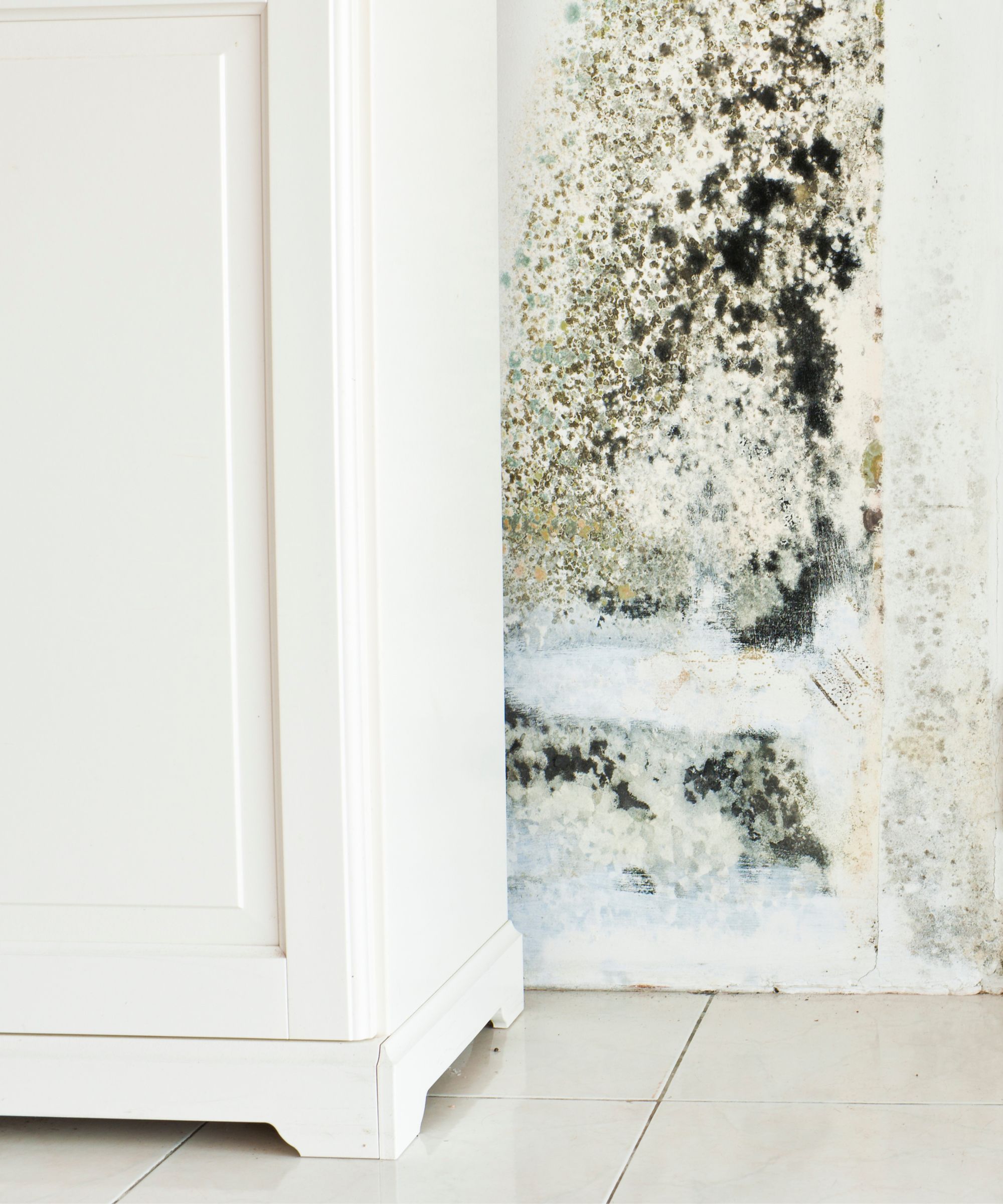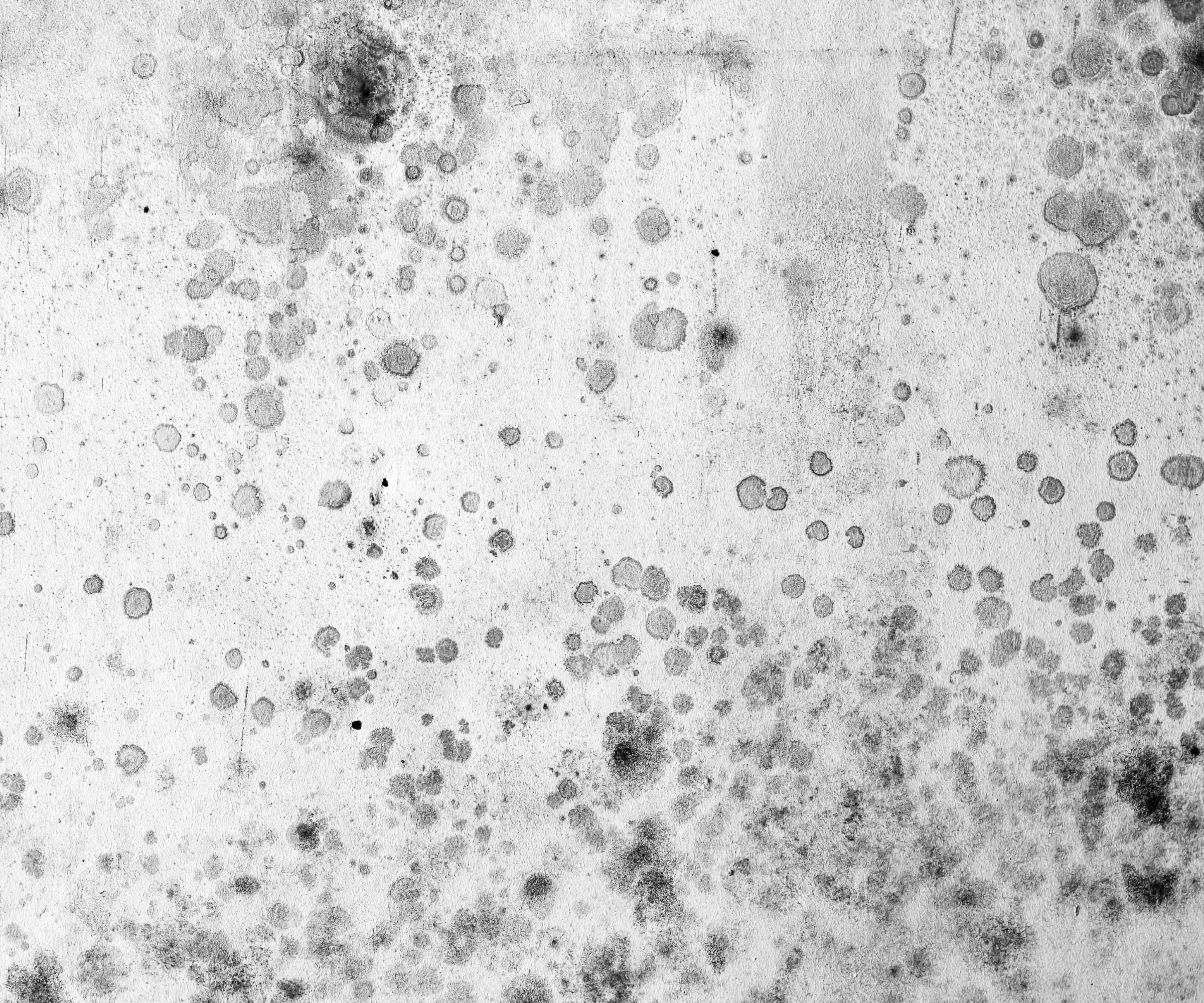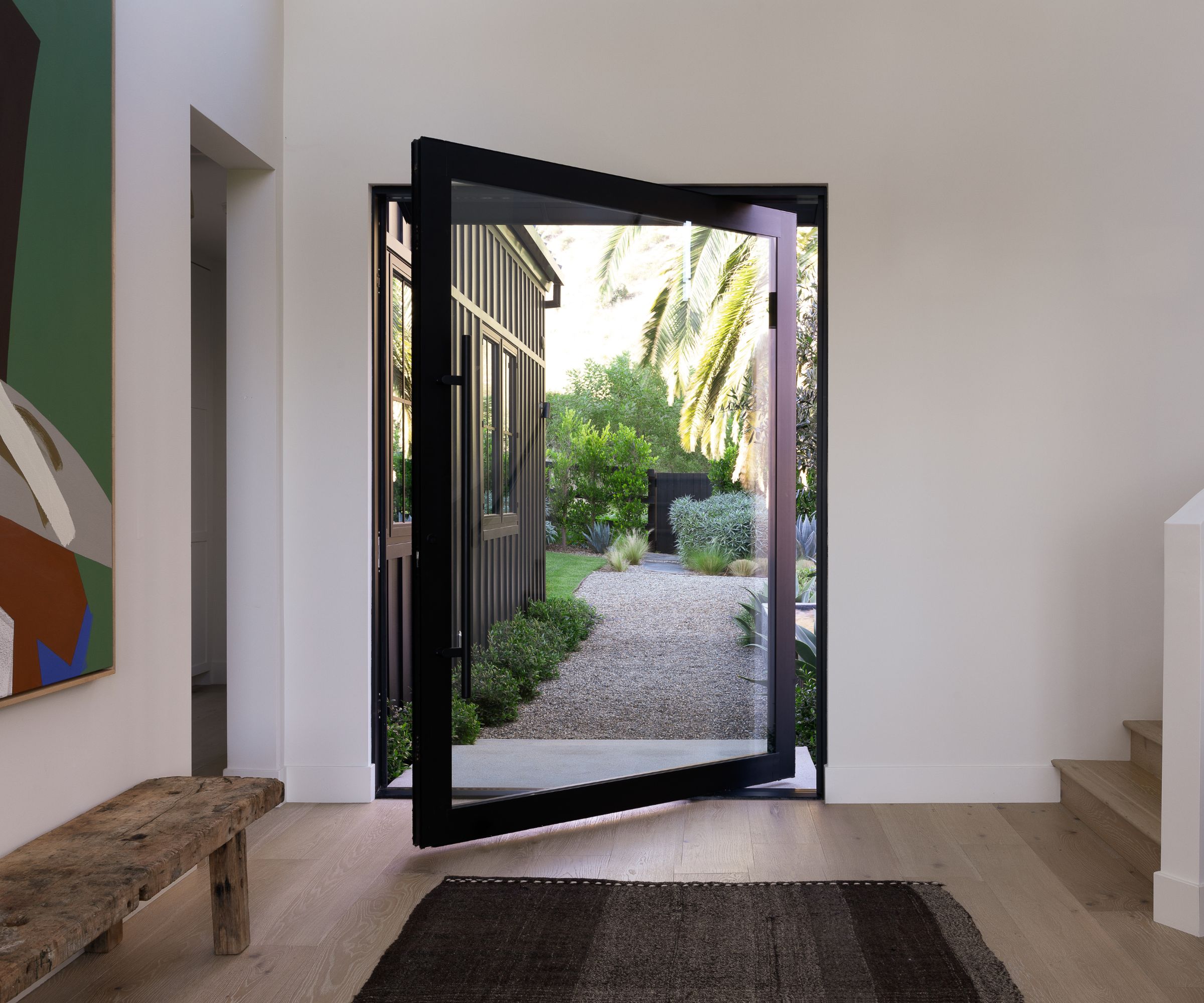Mold vs mildew – why it's vital you know the difference
When it comes to dealing with mold vs mildew in your home, you don't want to mix these two up, say experts


Mold and mildew are commonly mistaken as interchangeable terms. But while both are varieties of fungus, according to the Environmental Protection Agency, mildew refers to a specific type of mold. And this is not their only difference.
Both mold and mildew display distinct characteristics in terms of appearance, growth behavior, and health implications. Recognizing these distinctions and accurately differentiating between these fungi is essential for determining the best treatments to get rid of mold and mildew.
Ultimately, distinguishing between mold and mildew is crucial for maintaining safety standards in your home and preserving indoor air quality, structural integrity, and overall health. Our experts have explained the differences between mold and mildew, along with simple identification techniques and how to apply this important knowledge.
Mold vs mildew: what's the difference?
While knowing the distinctions between mold and mildew is important, let's start with their similarities. Both are fungi, which means they need food, water, and air to live. They thrive in similar environments – dark, damp, cool areas. However, certain types do better at higher temperatures, yet they can adapt and proliferate in various conditions.
Mold vs. Mildew – What’s the difference?
Mold

Appearance: Mold is a pervasive and potentially hazardous fungus, often characterized by its fuzzy or slimy texture and varying colors, such as green, blue, or black.
Growth behavior: Mold will grow vertically and find its way into other materials quickly. It can quickly grow from the inside out and tends to penetrate the surface of what it grows on, which can lead to significant structural damage, compromising the integrity of building materials like wood, drywall, and insulation.
Mold tends to thrive in environments with excess moisture and organic material. It usually appears in irregular patches and can spread quickly throughout a home, especially in moist and warm conditions, making it a common issue in areas affected by water leaks, humidity, or inadequate ventilation. It often grows on organic materials like wood, ceiling tiles, wallpaper, carpets, drywall, and insulation.
Health implications: It is a multicellular organism that grows in damp places and spreads by releasing spores into the air. These spores are often microscopic and can easily be inhaled. 'Exposure to mold spores can trigger various health problems, particularly in individuals with allergies, asthma, or compromised immune systems,' explains project manager at John The Plumber, Paranv Taneja. 'Respiratory issues, skin irritation, and neurological symptoms may manifest from prolonged exposure to mold-infested environments.'
Mildew

Appearance: Mildew appears as a powdery or fluffy white or gray substance that tends to grow flat and remains on the surface where it forms.
Growth behavior: Mildew is a ‘superficial’ fungus that is usually less virulent than mold and doesn’t penetrate as deeply. This mold variant is much less likely to spread and will usually grow on the surface it finds itself on. It usually starts out as small spots and spreads outwards. It is often easier to remove than mold because it doesn’t penetrate the surfaces it lives on. It also releases far fewer spores than mold does.
It is typically found on damp surfaces, organic materials, paper, or fabrics. 'Mildew growth often indicates moisture issues in localized areas, highlighting the importance of addressing underlying humidity problems to prevent recurrence,' says Paranv Taneja.
Health implications: 'While mildew can also cause respiratory discomfort and allergic reactions in susceptible individuals, it tends to be less invasive and damaging than mold.'
Why knowing the difference is vital

'The distinction between mold and mildew transcends mere semantics,' says Paranv Taneja, 'This impacts critical aspects of indoor air quality, structural maintenance, and occupant well-being.'
Health implications
Both mold and mildew can pose health risks, especially to individuals with allergies, asthma, or compromised immune systems. However, certain types of mold can be extremely toxic.
When mold spores are inhaled, they can cause allergic reactions or respiratory problems, including runny noses, itchy eyes, wheezing, and, in those with pre-existing conditions, even asthma attacks. 'Certain types of mold, such as black mold (Stachybotrys chartarum), are particularly harmful and can produce toxins that are severe health hazards,' warns Josh Mitchell, owner of Air Conditioner Lab.
Mildew, on the other hand, is less harmful than mold, although prolonged exposure to it can still irritate the respiratory system and exacerbate allergies.
Knowing whether you're dealing with mold or mildew, and the type of mold you're dealing with can determine the urgency of removal or evacuation required and aids in implementing targeted strategies to mitigate health risks associated with fungal exposure. This is especially crucial for vulnerable populations, including children, elderly individuals, and those with respiratory ailments.
Structural preservation
While mildew might damage surfaces' aesthetic appearance, mold can cause much more severe damage to the structural elements of a home. Mold’s ability to infiltrate porous materials and thrive in hidden spaces can weaken the integrity of infested materials, leading to potentially costly repairs and replacements.
'Understanding the distinct characteristics of mold and mildew informs effective remediation strategies to preserve the structural integrity of buildings and prevent extensive damage' says Pranav Taneja.
Treatment methods
Mold remediation typically involves rigorous cleaning, moisture control measures, and often professional intervention to ensure complete eradication and prevent recurrence. This is especially true if it involves porous surfaces where mold has penetrated deeply.
'If you find mold growing on walls, studs, subflooring, or your HVAC system in an area bigger than 10 square feet, the EPA says you should hire a professional service to get rid of it,' says Josh Mitchell. 'If you don't treat serious infections properly, they can spread to other places.'
Being surface-level and less invasive, mildew may be addressed through targeted cleaning methods using over-the-counter mold and mildew removers or common household items like bleach, hydrogen peroxide, and vinegar to kill mold. This RMR-86 instant mold and mildew stain remover spray is a best seller on Amazon.
Preventative measures
'Understanding these differences also guides effective prevention strategies,' says Josh Mitchell. 'For mildew, good air circulation and surface cleanliness might suffice. For mold, you may need to address larger issues like humidity control, leak repairs, and ensuring proper ventilation throughout your home,' like ventilating a basement to reduce damp and mold.
Additionally, different substances also work to deter the growth of these, such as cinnamon to prevent mold or fungicide paint and primer, such as this Rust-Oleum Zinsser mold-killing primer from Walmart to inhibit the growth of both mold and mildew.
Legal and insurance considerations
'Accurate identification of mold or mildew is essential for legal and insurance purposes, as coverage and liability may vary depending on the type and extent of fungal growth,' says Paranv Taneja.
'Working with certified professionals and documenting remediation efforts are critical steps in navigating potential legal and insurance complexities related to fungal infestations.'
How to differentiate them
If you are still unsure how to distinguish whether you are dealing with mold or mildew, you can identify them based on these factors:
Color
Mildew: Typically appears in gray, white, or yellowish, often with a powdery or downy appearance.
Mold: Comes in a broader spectrum of colors, including green, black, blue, red, purple, and orange. The colors can be vivid and vibrant.
Texture
Mildew: Has a lighter, flatter surface that can be wiped away somewhat easily.
Mold: Develops a thicker, fuzzier texture with root-like structures as it penetrates deeper into surfaces, making it much more challenging to remove by wiping alone.
Smell
Mildew: Generally lacks a strong odor or may have a mild, musty smell.
Mold: Often emits a distinct and sometimes pungent odor that can range from earthy and damp to highly foul.
Tips for Homeowners

- 'Regularly inspect your home for signs of moisture and condensation,' advises Josh Mitchell, HVAC Technician. 'Pay special attention to hidden moldy spots in the kitchens, bathrooms, basements, and attics where mold and mildew are more likely to grow.
- 'Use dehumidifiers and air conditioners to maintain the best humidity levels between 30-50% to help prevent both mold and mildew.
- 'If you encounter a large area of mold or signs of structural damage, consult a professional for a safe and effective removal.'
Regular inspections, proactive moisture management, and collaboration with qualified experts remain integral to effectively managing fungal issues and upholding optimal indoor environmental standards.
Sign up to the Homes & Gardens newsletter
Design expertise in your inbox – from inspiring decorating ideas and beautiful celebrity homes to practical gardening advice and shopping round-ups.

Lola Houlton is a news writer for Homes & Gardens. She has been writing content for Future PLC for the past six years, in particular Homes & Gardens, Real Homes and GardeningEtc. She writes on a broad range of subjects, including practical household advice, recipe articles, and product reviews, working closely with experts in their fields to cover everything from heating to home organization through to house plants. Lola is a graduate, who completed her degree in Psychology at the University of Sussex. She has also spent some time working at the BBC.
-
 Ina Garten's storage pantry is an insightful window into all of the best cookware used by the chef – and it's easy to recreate on your kitchen shelves from $48
Ina Garten's storage pantry is an insightful window into all of the best cookware used by the chef – and it's easy to recreate on your kitchen shelves from $48The beautiful dishware in The Barefoot Contessa's Hamptons pantry showcases the tools she uses most often to cook – this is exactly how you replicate it
By Sophie Edwards Published
-
 Extend the lifespan of your appliance with 5 simple but crucial washing machine maintenance tips
Extend the lifespan of your appliance with 5 simple but crucial washing machine maintenance tipsFrom cleaning the filters to keeping the door open, experts reveal the washer tips they swear by
By Andy van Terheyden Published